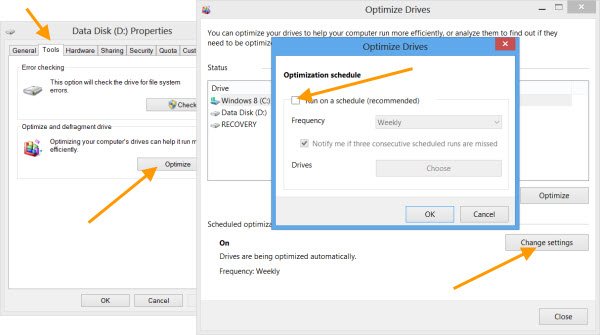


- #Trim enabler program windows auto defrag update
- #Trim enabler program windows auto defrag windows 10
- #Trim enabler program windows auto defrag pro
- #Trim enabler program windows auto defrag windows 8
- #Trim enabler program windows auto defrag windows 7
RELATED: Why Solid-State Drives Slow Down As You Fill Them Up
#Trim enabler program windows auto defrag update
Windows Update automatically updates your hardware drivers– whether or not you want it to–so you shouldn’t need to dig up new driver versions from your motherboard manufacturer’s website to go looking for performance improvements. Either way, SuperFetch is disabled automatically.
#Trim enabler program windows auto defrag windows 7
Windows 7 will disable SuperFetch system-wide if you have a fast enough SSD. You don’t need to tweak this by hand–Windows 10 just does the right thing.
#Trim enabler program windows auto defrag windows 10
Leave SuperFetch “on” in Windows 10 and it will automatically enable itself for slower mechanical drives and disable itself for fast SSDs.
#Trim enabler program windows auto defrag windows 8
Windows 8 and 10 also automatically disable the SuperFetch service for speedy solid-state drives. Microsoft employee Scott Hanselman offers more details on his blog. Windows 8 and 10 will also perform an SSD-optimized type of defragmentation about once a month. This forces the SSD to actually delete data that should have been deleted when TRIM commands were originally sent.

Windows will send the “retrim” command on the schedule you configure. On Windows 8 and 10, the “Optimize Drives” application will attempt to optimize your SSDs even further. In fact, modern versions of Windows won’t even let you attempt to defragment an SSD. But Windows already knows this, too: modern versions of Windows will detect that SSD and will turn off defragging. Performing a typical defragmentation operation on an SSD isn’t a good idea–even if wear isn’t a concern, attempting to move all that data around won’t speed up file access times like it will on a mechanical drive. If you used an SSD with Windows XP or Vista, you needed to manually enable TRIM, which ensures your SSD can clean up deleted files and stay speedy. However, ever since Windows 7, Windows has automatically enabled TRIM for any drive it detects as solid-state. There are some important optimizations, but Windows performs them all automatically. Windows Already Performs the Necessary Optimizations For You Modern SSDs are larger and less expensive, so you shouldn’t have to disable important system functions (like hibernation) to stay within these limits. That’s because SSDs may slow down as you fill them up, just like any other drive–but this was more helpful when SSDs were tiny. Other guides advise you to reduce the amount of files you store on the SSD to save space. And for extremely heavy use–for example, database servers–an SSD might not be up to snuff. But tweaking Windows to write a bit less to the drive won’t make an appreciable difference. You still need to perform regular backups of your important files, as SSDs could fail for other reasons aside from wear. Everything wears down, and SSDs are no exception–but they don’t wear down so quickly that we need to worry about it. In fact, there’s a good chance you’ll die before your SSD dies of wear. You’ll probably be done with the drive well before then. It’s unlikely you’ll write that much data to the drive every single day. At 2 PB, you could write 100 GB a day to the drive every single day for over 54 years before the drive failed.
#Trim enabler program windows auto defrag pro
The fact that the 840 Pro exceeded 2.4PB is nothing short of amazing, even if that achievement is also kind of academic.”Įven at 700TB, the lowest failure threshold, you could write 100 GB a day to the drive every single day for over 19 years before the drive failed. Errors didn’t strike the Samsung 840 Series until after 300TB of writes, and it took over 700TB to induce the first failures. “Over the past 18 months, we’ve watched modern SSDs easily write far more data than most consumers will ever need. Tech Report ran an 18-month-long stress test where they wrote as much data to SSDs as possible to see when they failed. Guides assert that you should try to avoid unnecessary wear on the SSD by minimizing the amount of writes.īut worries about SSD wear are overblown. That’s because each cell of flash memory on the drive only has a limited number of writes before it can’t be written to anymore. Much of the advice on “optimizing” Windows for an SSD involves reducing the amount of writes to the SSD. There are a lot of guides out there about optimizing your SSD, but we don’t recommend following most of them. Some of the advice is outdated, and some of it was never necessary. Found this article about Windows and modern SSDs: Don’t Waste Time Optimizing Your SSD, Windows Knows What Its Doing SSDs Aren’t as Small or Fragile as They Used to Be


 0 kommentar(er)
0 kommentar(er)
